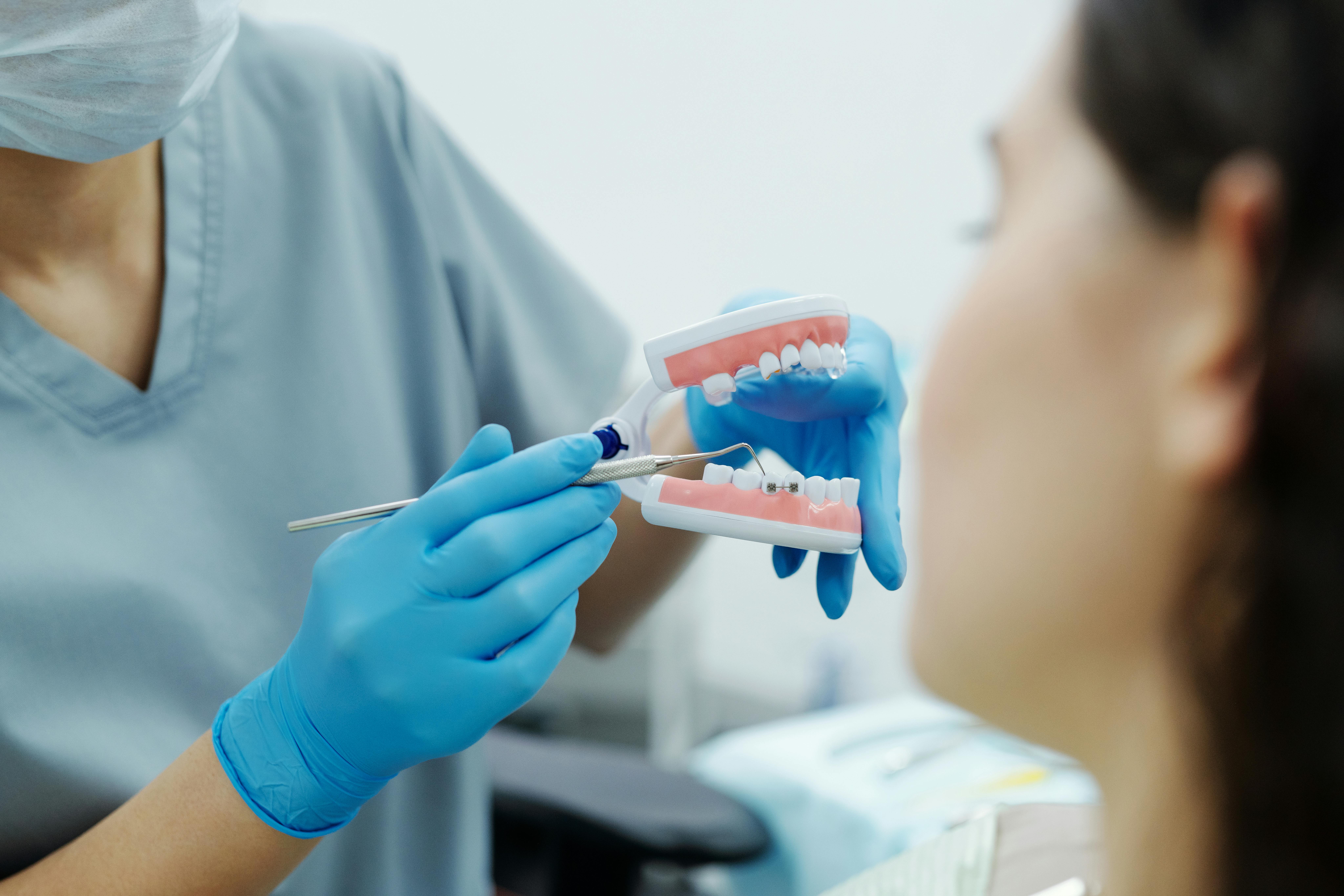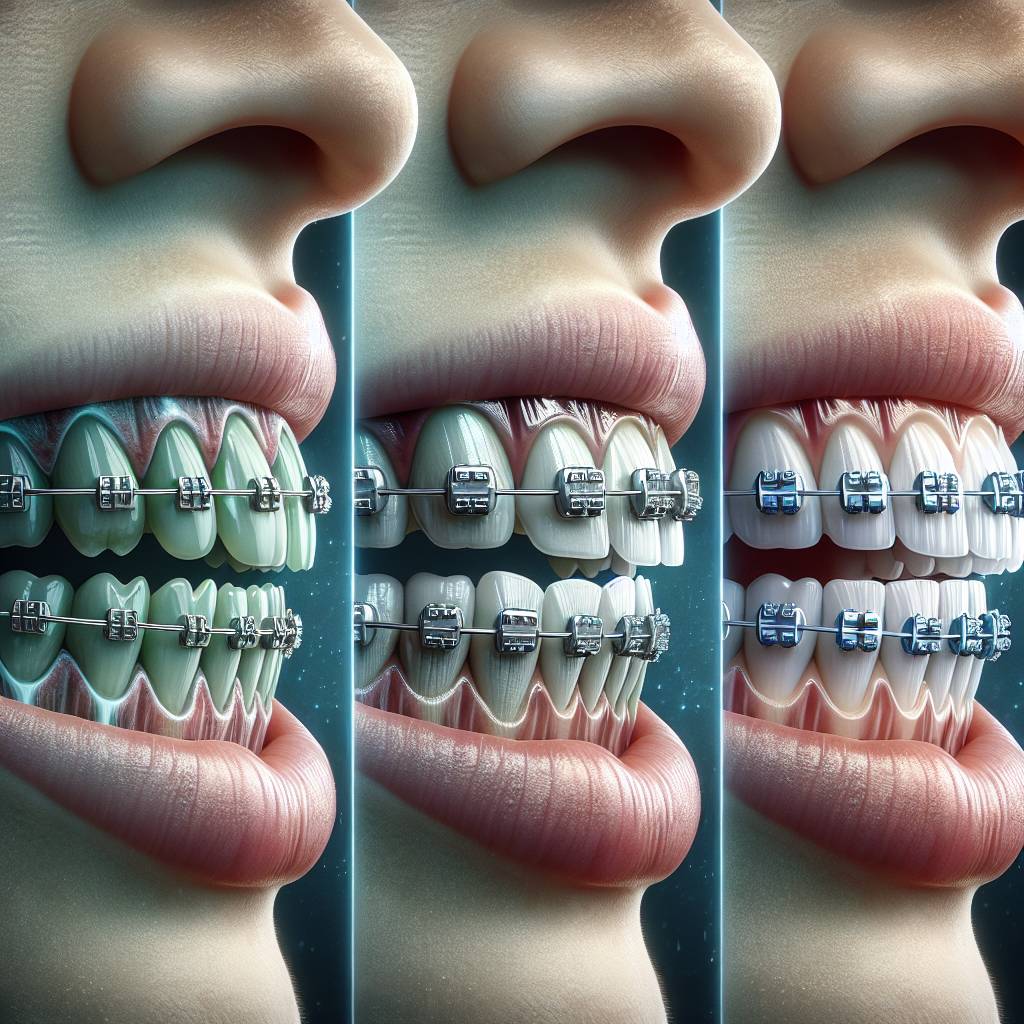Braces are a common choice for people looking to straighten their teeth. They are an effective way to correct misaligned, crowded, and crooked teeth, as well as correct poor bites. But how long do teeth take to straighten with braces? This depends on a variety of factors, such as the severity of the misalignment, the type of braces used, how often adjustments are made, and how compliant the patient is with wearing their braces. In this article, we will discuss these factors and provide an estimate for how long it takes to straighten teeth with braces.It depends on how misaligned the teeth are and how long the patient wears the braces. Generally, it can take anywhere from 6 months to 2 years for teeth to be straightened with braces.
Type of Treatment
The type of treatment used to straighten teeth with braces can affect the amount of time needed. Orthodontic treatments such as traditional metal braces, clear aligners, and ceramic braces each have their own timeline for completion. Traditional metal braces usually take longer to complete treatment than other methods, while clear aligners and ceramic braces typically require shorter treatment times. It is important to discuss the various treatment options with your orthodontist in order to determine which option is best for your individual needs.
Patient Age
Patient age is another factor that can affect the time needed to straighten teeth with braces. In general, children and teenagers tend to have quicker treatment times because their teeth move more quickly than an adult’s teeth. That being said, adults can still benefit from orthodontic treatments and may see results in a relatively short amount of time depending on their individual needs.
Severity of Misalignment
The severity of misalignment can also influence the amount of time needed for successful orthodontic treatment. Patients with minor misalignments may be able to achieve desired results in a shorter amount of time than patients with more severe misalignments. It is important to discuss your individual case with your orthodontist in order to determine an estimated timeline for successful completion of your orthodontic treatment plan.
Compliance With Treatment
Lastly, patient compliance with the prescribed orthodontic treatment plan can affect how long it takes to straighten teeth with braces. It is important for patients to wear their appliances as recommended by their orthodontists in order to see optimal results within the prescribed timeline for completion. Patients who are compliant with their prescribed treatments typically experience better outcomes and faster results than those who are not compliant with their treatments.
Average Time
The average time it takes to straighten teeth with braces depends on several factors, including the severity of the misalignment and the type of braces used. Generally speaking, metal braces can take anywhere from 18 to 30 months, while ceramic braces may take slightly less time. Invisalign and other clear aligner systems can usually be completed within 12 to 18 months. It is important to note that each patient’s case is unique and results will vary depending on the individual’s situation.
In addition to the type of braces used, other factors that affect how long it takes to straighten teeth include how often adjustments are made and how well patients follow their orthodontist’s instructions. Regular visits with an orthodontist are necessary in order to make sure the treatment plan is progressing as expected. Patients need to follow instructions about cleaning and wearing their braces so they can achieve their desired results in a timely manner. With proper care and regular visits, it is possible for some patients to complete their treatment in as little as six months.
Choose the right orthodontist
Choosing the right orthodontist is the most important step in getting your teeth straightened quickly with braces. It’s important to choose an experienced and qualified orthodontist who specializes in braces. If possible, ask for recommendations from friends or family, or search online reviews for more information. This will help ensure that you get the best service and results.
Follow your treatment plan
Once you have chosen an orthodontist, make sure to follow their treatment plan. This means attending all appointments and following any instructions given by the orthodontist. This may include wearing elastics or rubber bands around your braces to help move your teeth, as well as brushing and flossing regularly. Following your treatment plan will help ensure that your braces are adjusted correctly and that you get the best results.
Eat a healthy diet
Eating a healthy diet can also help speed up the process of straightening your teeth with braces. Eating plenty of fruits, vegetables, whole grains, and lean proteins will help keep your teeth healthy and strong. Avoiding sugary foods and drinks can also help reduce plaque buildup on your teeth, which can lead to crookedness if left untreated.
Wear a retainer
Once you have finished wearing braces, it’s important to wear a retainer as directed by your orthodontist. A retainer is designed to keep your teeth in place after they have been moved by braces. Wearing a retainer regularly is essential for maintaining straight teeth in the long run.
By following these tips, you can ensure that your teeth are straightened quickly with braces. Make sure to choose an experienced and qualified orthodontist, follow their treatment plan, eat a healthy diet, and wear a retainer as directed. With proper care and guidance from an orthodontist, you can get straighter teeth in no time!
Are there any other ways to straighten my teeth apart from braces?
Braces are a popular and effective way to straighten teeth, but there are other alternatives. One option is Invisalign, which uses clear plastic aligners to shift your teeth into the desired position. It is removable, comfortable, and does not require metal brackets or wires. Additionally, Invisalign can be used to address a wide range of misalignment issues such as overbite, underbite, overcrowding, and gaps between teeth.
Another option is tooth bonding, in which a composite resin material is applied to the surface of the tooth to reshape it. This method is relatively quick and painless and can be used to improve the size or shape of a single tooth or multiple teeth.
Finally, veneers are thin shells of porcelain that are bonded onto the front of teeth to improve their appearance. Veneers can be used for a variety of cosmetic purposes such as closing gaps between teeth or changing the shape or color of a tooth. They provide an even look and are stain resistant.
Overall, while braces remain one of the most popular methods for straightening teeth, there are other alternatives such as Invisalign, bonding and veneers that can also help you achieve your desired smile. It’s important to discuss all your options with an orthodontist before deciding on the best treatment for you.

Types of Braces
Braces are the most common and effective method for straightening teeth. There are several types of braces available, each with their own unique advantages. Traditional metal braces are the most common type of braces, and they use metal brackets and bands to move teeth into place. Ceramic braces are made from a translucent material and blend in with the natural color of your teeth. Lingual braces are placed on the backside of your teeth, making them virtually invisible when you smile. Self-ligating braces use clips instead of elastic bands to hold archwires in place, reducing friction and allowing for more efficient treatment. Clear aligners are another type of orthodontic treatment that uses custom-made removable aligners to gradually move your teeth into place without the need for brackets or wires.
Which Type is Most Effective?
The type of braces that is most effective for you will depend on your individual needs and goals. Traditional metal braces tend to be the most effective type for complicated cases; however, ceramic or lingual braces may be recommended if aesthetics is a priority. Self-ligating braces can reduce treatment time and discomfort, while clear aligners provide an almost invisible option for those who want to discreetly straighten their teeth. Ultimately, it’s best to consult with an orthodontist to determine which type of braces will best meet your needs and give you the results you desire.
Is Invisalign a good option for straightening teeth?
Invisalign is one of the most popular options for straightening teeth. It is an invisible orthodontic treatment that consists of a series of clear plastic aligners that are custom-made to fit each patient’s mouth. The aligners are designed to gradually move the teeth into their correct positions over time, resulting in a straighter, more beautiful smile. Invisalign offers many advantages over traditional braces, such as being virtually invisible and more comfortable to wear. It also requires fewer visits to the dentist and less maintenance than traditional braces. For many people, Invisalign is an excellent option for achieving a straighter smile without having to deal with metal brackets and wires.
Cost of Teeth Straightening with Braces
The cost of teeth straightening with braces varies greatly depending on the type of braces used, the complexity of the case, and the length of treatment. Generally speaking, traditional metal braces are the most affordable option, while ceramic or clear braces may cost more. In addition, you will likely need to pay for a consultation fee and periodic adjustments as your treatment progresses.
The average cost for traditional metal braces can range from $3,000 to $7,000 for both upper and lower arches. Cost is usually based on how long your treatment will take and how many visits you will need to make to your orthodontist. Clear or ceramic braces may cost up to 20 percent more than traditional metal braces. If you have insurance coverage for orthodontic care, this can lower your overall cost significantly.
In addition to the cost of braces themselves, you may also need to pay for additional items such as orthodontic wax, special toothbrushes or flossers, and retainers after your treatment is complete. These items can add up quickly so it’s important to factor them into your budget when considering teeth straightening with braces.
Your orthodontist may also offer payment plans that allow you to spread out the cost of treatment over several months or years. This makes it easier to manage the expense of getting your teeth straightened without having to pay all at once. Be sure to inquire about any financing options that are available when discussing costs with your orthodontist.

Conclusion
The answer to the question “how long do teeth take to straighten with braces” is highly dependent on the individual and the type of braces they are using. Generally, traditional braces require between 18 and 24 months to complete treatment, while Invisalign can take anywhere from 6 to 18 months. It is important for patients to discuss their expectations with their orthodontist before beginning treatment.
No matter which type of braces a patient chooses, regular visits and adjustments are necessary in order for teeth straightening to be successful. Furthermore, it is important that patients maintain a healthy oral hygiene routine, as well as follow the instructions given by their orthodontist, in order to ensure that treatment is effective and timely.
In summary, it can take anywhere from 6 months to 2 years for teeth straightening with braces. The amount of time it takes for each individual will depend on the type of braces chosen and how closely they follow the instructions given by their orthodontist. With dedication and patience, patients should achieve the desired results in a timely manner.

